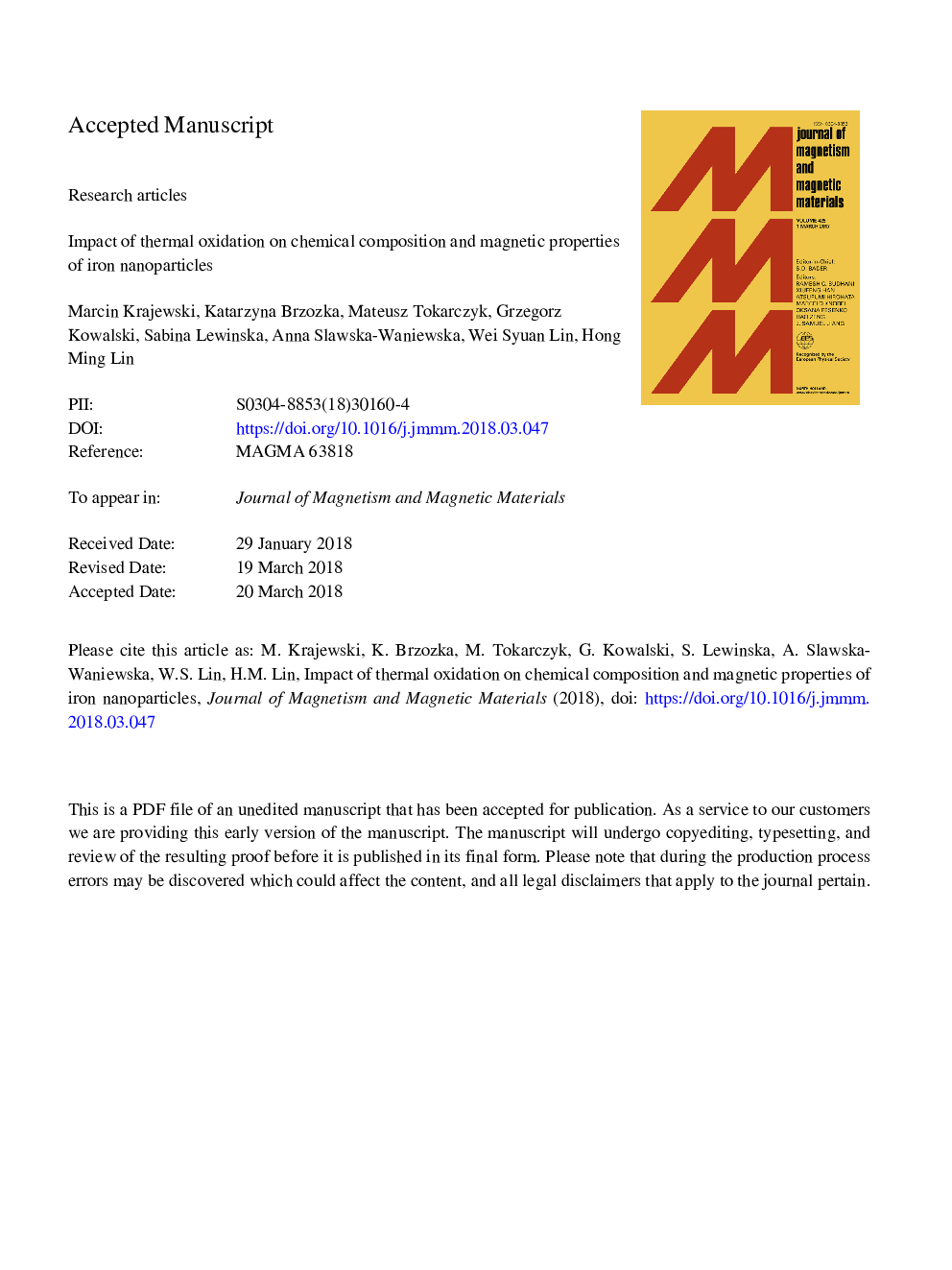| Article ID | Journal | Published Year | Pages | File Type |
|---|---|---|---|---|
| 8153329 | Journal of Magnetism and Magnetic Materials | 2018 | 30 Pages |
Abstract
The main objective of this work is to study the influence of thermal oxidation on the chemical composition and magnetic properties of iron nanoparticles which were manufactured in a simple chemical reduction of Fe3+ ions coming from iron salt with sodium borohydride. The annealing processing was performed in an argon atmosphere containing the traces of oxygen to avoid spontaneous oxidation of iron at temperatures ranging from 200â¯Â°C to 800â¯Â°C. The chemical composition and magnetic properties of as-prepared and thermally-treated nanoparticles were determined by means of X-ray diffractometry, Raman spectroscopy, Mössbauer spectroscopy and vibrating sample magnetometry. Due to the magnetic interactions, the investigated iron nanoparticles tended to create the dense aggregates which were difficult to split even at low temperatures. This caused that there was no empty space between them, which led to their partial sintering at elevated temperatures. These features hindered their precise morphological observations using the electron microscopy techniques. The obtained results show that the annealing process up to 800â¯Â°C resulted in a progressive change in the chemical composition of as-prepared iron nanoparticles which was associated with their oxidation. As a consequence, their magnetic properties also depended on the annealing temperature. For instance, considering the values of saturation magnetization, its highest value was recorded for the as-prepared nanoparticles at 1â¯T and it equals 149â¯emu/g, while the saturation point for nanoparticles treated at 600â¯Â°C and higher temperatures was not reached even at the magnetic field of about 5â¯T. Moreover, a significant enhancement of coercivity was observed for the iron nanoparticles annealed over 600â¯Â°C.
Related Topics
Physical Sciences and Engineering
Physics and Astronomy
Condensed Matter Physics
Authors
Marcin Krajewski, Katarzyna Brzozka, Mateusz Tokarczyk, Grzegorz Kowalski, Sabina Lewinska, Anna Slawska-Waniewska, Wei Syuan Lin, Hong Ming Lin,
